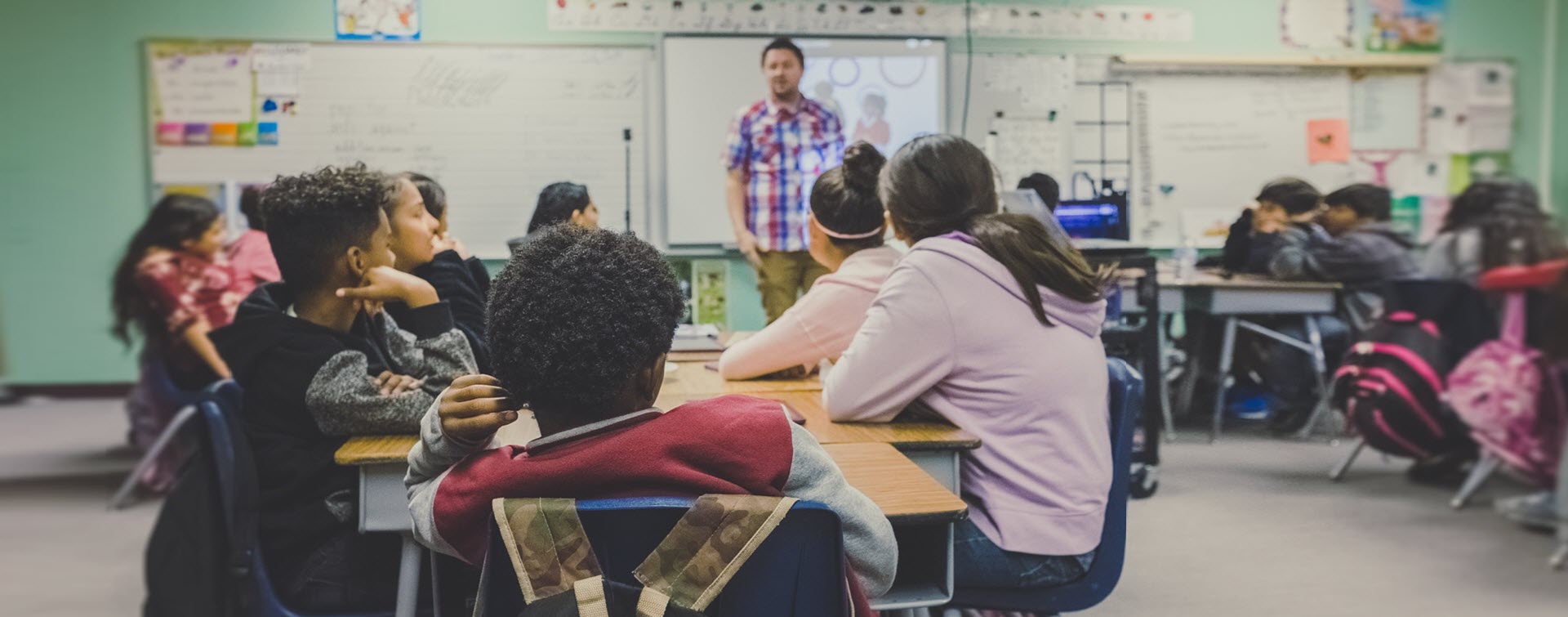Concern, Confusion and Hope Surround E-Rate Program
At this point in the calendar year in the E-Rate program funding process for K-12 schools and libraries, we are at an “in-between” point. On the one hand the Universal Service Administrative Company. (USAC) is reviewing the Form 471 2017 funding requests submitted during the late-February through mid-May filing window. On the other hand, school districts, libraries, consortiums, consultants and service providers are gearing up for the July 1st start of the 2018 Funding Year. We’ve also recently seen scathing criticism of the E-rate process from the FCC, the resignation of USAC’s CEO and rumors of potential changes to the program itself.
In conversations with stakeholders in the E-rate ecosystem and sessions I’ve attended at the Schools, Health and Libraries (SHLB) Annual Conference and the Broadband Communities Summit, I would characterize the general mood as a combination of concern, confusion and hope.
Concern: Funding Cuts and Fiber Option Changes?
At a macro level, there are concerns about whether the new regime at the FCC will continue to fund the E-rate program at levels equal to the previous few years. The reasoning behind the first concern is that total demand for E-rate funding in dollar terms has traditionally lagged the total amount of annual budget set aside for the program. The unspent funds were then “carried - over” to subsequent funding years. When added to the next year’s budget, this “carry-over” continued to grow the total budget available, but furthered the gap between total demand and available funding. Based upon previous comments from FCC commissioners, there is a concern that that future funding levels may be reduced – just when pent-up bandwidth demand could peak.
A number of districts and managed service providers have been surprised with requests to separate the costs of strands that connect school buildings from those that the service provider’s other anchor tenants in their funding applications.
During the SHLB conference A representative from E-rate consultant Funds for Learning (FFL) presented preliminary findings for the 2017 funding year. Per FFL’s analysis, while the total number of funding applications increased slightly over 2016 levels, the total amount of funding requested decreased. Some of the decrease can be attributed to an overall reduction in the price of Internet and Wide Area Network (WAN) connections. But the FFL analysis as well as comments from FCC Chairman Pai, also point to an inflexible, cumbersome E-rate application process. At the same time, there is an increasing perception of risk among school districts that one day they could be required to pay back funds they receive from the E-Rate program. A recent request from another FCC commissioner for an investigation into potential sources of waste in the E-rate program grabbed a lot of attention.
There is also a lot of angst over whether there will be any changes made to the to the treatment of dark fiber and self-provision options for Category One services. For example, one panelist at the Broadband Communities Summit with previous interaction with the FCC opined that the self-provision option may become restricted to rural districts eligible for the highest levels of E-rate discounts. In addition, difficulties in cost-justifying these two options, additional funding application requirements and lack of definitive statements from the FCC, are behind this second category of concern.
Confusion: More Questions than Answers
The questions posed to the FCC and USAC representatives during the E-Rate Workshop at the SHLB conferences provide a good barometer of the level of confusion surrounding the E-rate program. Although the audience consisted of district leaders, E-Rate consultants and Service Provider vendors claiming years of experience with the program, to use the syntax of Obi -Wan Kenobe, of questions there were many, but of definitive answers there were few.
“Special Construction”
One of the biggest areas of confusion is in the definition and application of “special construction” within Category One services. Most stakeholders are aware that “special construction” funds can only be used to build connections to the school buildings. But many of them mistakenly believe that this rule only applies to districts pursuing the self-provision option. As the FCC representative pointed out during the SHLB session, this rule also applies to the “lit fiber” and “dark fiber” options. A number of districts and managed service providers have been surprised with requests to separate the costs of strands that connect school buildings from those that the service provider’s other anchor tenants in their funding applications.
When this question was posed to the FCC representative she responded that there will be a greater focus on public sector funds are spent under the new FCC leadership. She added that there’s a growing perception within the FCC’s E-rate leadership that program funds had been used by telecom service providers to expand their network footprint beyond just connecting schools and libraries. Therefore, applicants for lit services that include special construction funding should expect to receive an additional level of scrutiny.
Transport Only “Clarification”
Another area of confusion (and complaint) centers around USAC’s early March new guidance – which was later termed a “clarification” – for applicants pursuing self-provisioned networks. The guidance included new requirements, including that applicants consider non-fiber alternatives such as wireless, and adds the term “Transport Only – No ISP Service” as a service type option in their Form 470s. Many applicants by this point had already completed their RFP process and were waiting to submit their Form 471 funding request. Some were advised by USAC to file a new Form 470 that included the new language, and restart their bid process.
The FCC explained that this was done to ensure technical neutrality, i.e., that the program does not exclude wireless broadband alternatives. A few school districts and their E-rate consultants have filed waiver requests for relief from these new requirements. The FCC is currently reviewing these requests and supporting comments from organizations like the State E-rate Coordinators Alliance.
E-Rate Consultant Education
A frequent comment I hear is that E-Rate consultants are not able to provide definitive answers to complex, nuanced questions from their school and library customers. During the SHLB E-rate workshop I heard two complaints to USAC and the FCC about the effectiveness of E-rate consultants, as well as requests to improve the level of training provided to the consultant community. In their defense, E-rate consultants can only provide the level of detail that they themselves are given.
For example, there were many program questions posed to the FCC and USAC representatives that were specific to an applicant’s situation. In many cases the response from USAC and the FCC was that “we would need to evaluate that on a case-by-case basis”, or “we’ll need to discuss that internally and come back to you”. Expecting E-rate consultants to provide guidance on these types of questions is unrealistic. It also points to the need for better training and communication between USAC, the FCC and the consultant community to reduce the complexity of the program.
Hope: Process Improvements on the Horizon
Despite the clouds of concern and confusion, there is plenty of reason to be optimistic. In written statements and in speeches, FCC Chairman Pai has reiterated the importance of broadband and the E-rate program in bridging the “digital divide” within K-12 schools. Also encouraging is the FCC’s acknowledgement of the current problems with the E-rate process, and its commitment to resolving them. In addition, USAC appointed a new Vice President to lead the Schools and Libraries program. He is working closely with his team and counterparts in the FCC to make the E-rate process more user friendly and responsive.
There is also a groundswell of support within the user community. Many industry associations, non-profits, consortiums, districts and individuals have expressed their willingness to work at the grass roots level to improve the program. With these levels of commitment and dedication, expect to see a much-improved E-rate program soon.









